The New York State Writers Institute’s annual Film Festival is always a great event. It’s free, and this year’s included nice breakfast and dinner buffets! (And I got to meet Jacqueline Bisset!)
The American Dream and Other Fairy Tales was produced by Abigail Disney — Walt’s grandniece. Its theme was corporate greed at the expense of workers. Abigail Disney has become a crusader on that.

Not so long ago, battling for a $15 minimum hourly wage was a big thing. Disneyland workers were getting $15; being bumped up to $18.25. But there’s been inflation. In that Anaheim, CA locale, the film asserted, a living wage would now be $24.
So, as vividly shown, those workers struggle to make ends meet. One single gal, Artemis, searched endlessly for affordable housing, finally finding something entailing a two-hour commute. (Nasty confession: I judged her unattractive, only to realize her face must be molded by constant stress about her circumstances.)
The City of Anaheim apparently deems Disneyland a big asset, for all the tourism it attracts. No surprise there. So the City financed construction of a huge parking garage near the park. Then leased it to the Disney company for $1 a year, enabling Disney to reap tens of millions in parking fees annually. WTF??
More profit for the company; less for the City to help its residents. And the pandemic provided occasion for Disney to shed tens of thousands of workers, further fattening the corporate bottom line. It’s stock price has duly marched upward.
None of this does anything for the workers — who in fact have more toil, due to the fewer hands. While Bob Iger, Disney’s CEO, is paid hundreds of millions.
Corporate culture wasn’t always so greed-filled, the film argues, pointing to Disney’s own past, when labor unions were stronger. But it invokes Evil Geniuses (a book I’ve reviewed, whose author Kurt Andersen appears in the film) as showing how America’s richest labored to change that culture to feather their nests.
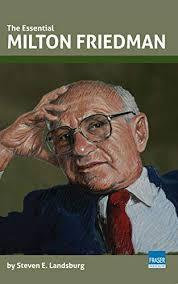
A particular villain in the film is economist Milton Friedman, who held that a business’s only responsibility is to earn profits for its shareholder-owners. That might indeed sound ugly. However, Friedman was not arguing for profit for profits’ sake. Instead, that profits are a gauge of a corporation’s real benefit to society: producing goods and services people want, at prices willingly paid, to enhance their quality of life. Of course corporations wouldn’t do that without profit.
That’s what makes a free market economy beneficial for society. Encapsulated by Adam Smith’s famous line: “It is not from the benevolence of the butcher, the brewer, or the baker that we expect our dinner, but from their regard to their own self-interest.” And Friedman was arguing that anything distracting a business from its main job of providing desired goods and services would detract from the general welfare.
The film casts Iger’s pay, and corporate profits more generally, as coming at the expense of Disney’s workers. But again, we can’t expect any business to give us desired things without its profiting. What’s a reasonable level of profit can be argued.
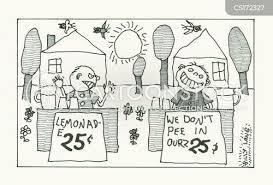
But here another aspect of free market economics comes in: competition. If businesses must vie with each other for consumer dollars, with price a key factor, that tends to drive down prices to levels allowing just enough profit to keep them going. I have friends always saying grocery owners should just cut prices and take less profit. In fact that’s a highly competitive market where profits are, in consequence, just a tiny percentage of cash register receipts.
I don’t know what that number is for Disney. But even Disney, too, faces intense competition. Consumers have numerous other entertainment options.
All that said, however, there’s much evidence that in the big picture, America’s economy has become less competitive, with accordingly higher profit levels. The Abigail Disneys and Kurt Andersens of the world think it’s because government has let corporations get away with more. Yet there’s another factor of government putting its thumb on the scale to reduce opportunities for competition. That’s certainly true in the vast realm of governmental licensing requirements, fundamentally anti-competitive. “Free market economics” is not the problem; freer would be better.
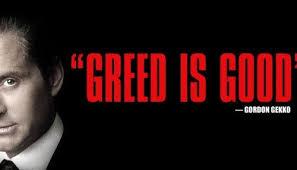
Greed is a mis-used word. The film inevitably quoted Gordon Gekko. It’s simply human to want more for oneself, to improve one’s life. Mostly that’s a motivator for efforts that benefit society (per Adam Smith). What’s a problem (bad greed) is seeking gain unethically, at another’s expense.
As for Iger’s bloated pay: yes, it’s unreasonably excessive, Disney should be able to hire a perfectly fine CEO for a small fraction. And most of what’s now paid to Iger could instead be used to give workers more, without reducing overall profit. CEO pay in general got out of hand due to perversities in how it’s determined, full of conflicts of interest and self-dealing, a system guys like Iger all exploit because they can.
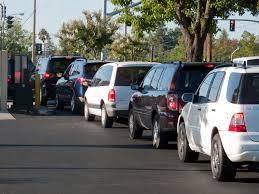
The left’s picture is of a very unequal America, with its Iger types hogging undue shares of its wealth, while the masses, like those portrayed in Disney’s film, suffer. It showed, for example, rising demand for handouts from a local food bank — one striking scene was an endless line of cars awaiting their turns.
But, dare one say, those people have cars. Not to dismiss their undoubted challenges, but poverty in America isn’t what it used to be. Government help is a big reason. More would be justified; but let’s not forget that it’s a relatively modern thing.
And it’s certainly not true that the “the masses” suffer deprivation. The far bigger phenomenon is mass affluence. Most Americans are part of a huge middle class doing a lot better than those in the film. And while there’s much written about a “shrinking middle class,” a lot of that is people rising rather than falling out of that class.
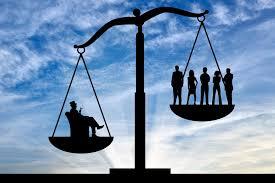
Also much invoked is supposedly rising inequality. But here too the true picture is complex. And while it’s fiendishly hard to parse the data, there’s much evidence that, in the pandemic and its wake, wages in the lowest echelons have actually risen faster than in the rest of the economy — reducing inequality.
But perhaps all this is easy for me to say, having been very lucky, with a resulting great life. I feel for the people in that film. They have it tough, and make great efforts. They are good people.
